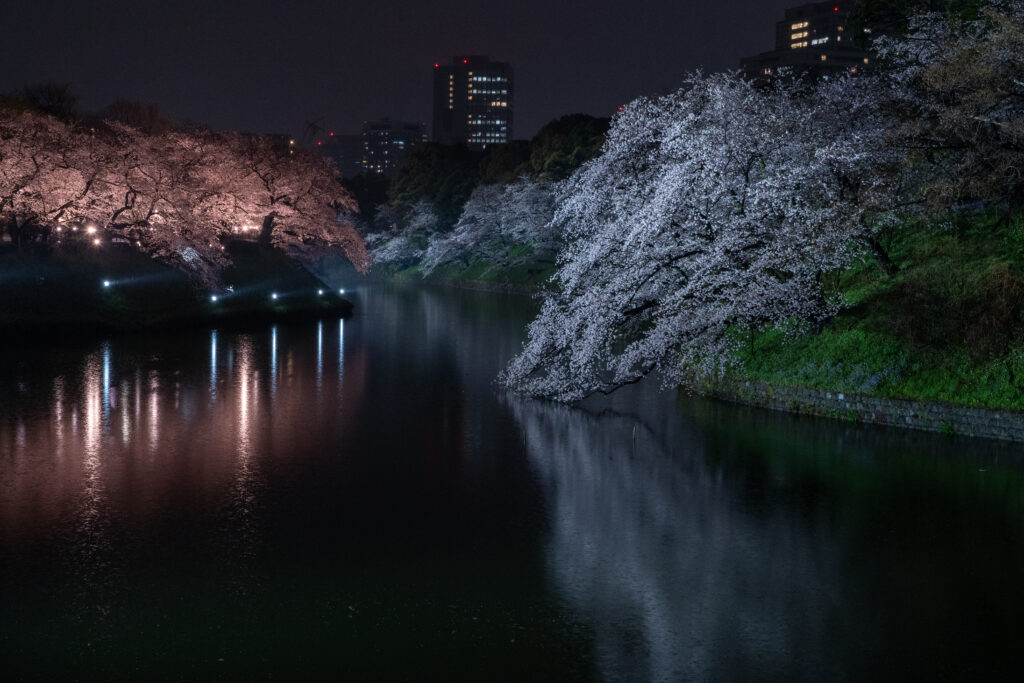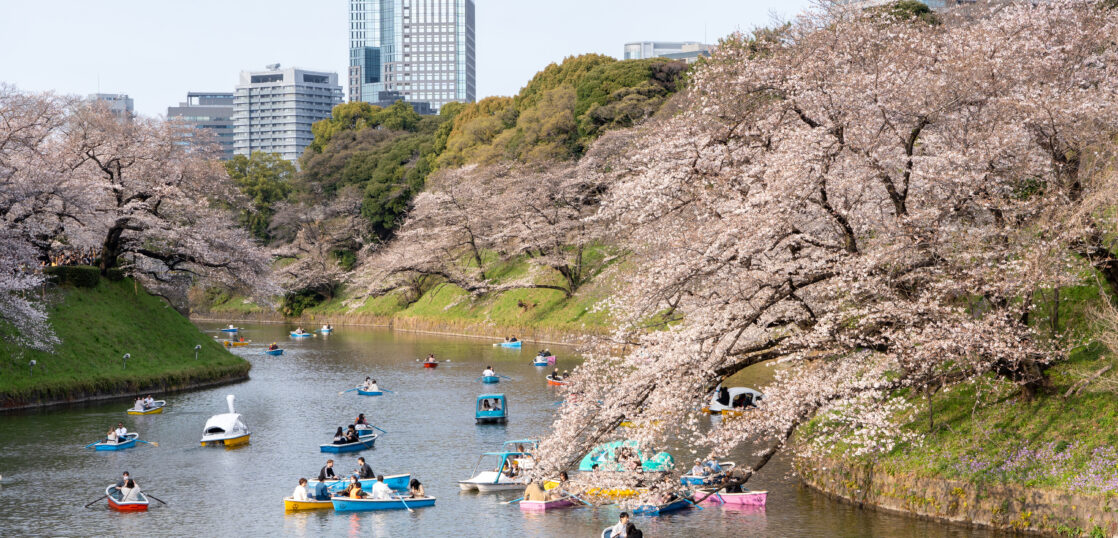Hanami is the Japanese traditional culture of viewing cherry blossoms in spring.
In Japan, cherry blossoms can be seen not only in the parks, but also in various places in the city, and there are many places are called cherry blossom viewing spots.

Ueno Park
In Tokyo, for example, there are Meguro River, Chidorigafuchi Moat, Ueno Park, Asukayama Park, Inokashira Park, Yoyogi Park, Sumida River, etc.

Chidorigafuchi Moat
Origins and how to enjoy Hanami
The origin of hanami dates back to the Nara period (710-784), when the custom of viewing plum blossoms by aristocrats spread to the masses during the Edo period (1600-1868).
Hanami is not only a time to enjoy looking at the cherry blossoms, but it is also a time for family, friends, and co-workers to get together, bring food and drinks, and often have a party called “Enkai”.
Some places get so crowded that people even start taking up their places the day before or early in the morning.
In Tokyo, hanami(enkai) are held especially in Ueno Park, Yoyogi Park, and Inokashira Park.
Voluntary ban on hanami(enkai) due to the new coronavirus (COVID‑19)
Due to the new coronavirus, people have been asked to refrain from having parties in the above parks for the past several years.
However, in 2023, finally hanami(enkai) became possible due to the improvement of the infection situation.

